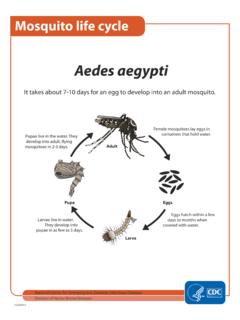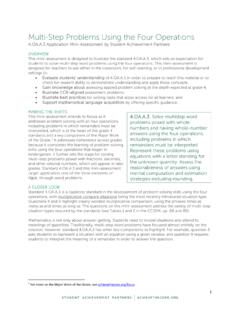Transcription of Department of Consumer Affairs Structural Pest Control Board
1 Department of Consumer Affairs Structural Pest Control Board The Stru ct ural Pest Control Board (SPCB) licenses and regulates businesses and in dividuals for pest Control . Licensees must meet minimum qualifi ca tions and levels of competency to provide safe and eff ec tive se rvices to the public. Licenses ca n be verified online at What is fumigation?
2 Fumigation is a method of us ing a lethal gas to ex te rminate pests within an enclosed space. There are two fumigation methods used. One is to seal the stru ct ure with plastic, tape, or other materials , and the other is to enclose the st ru ct ure in a tent of vinyl-coated nylon tarpaulins . How can I tell if my house has been fumigated? Si nce 1961, the law requires that, when a fumigation is complete, the fumigator must post a sign with the name of the licensee, the date of the fumigation, and the fumigant used.
3 The sign must be post ed either in the attic or in the subarea of a hous e, such as a garage. The sign must remai n permanently attached. What must be done before a house is fumigated? All people, pets, and plants must be removed fromthe stru ct ure before fumigation. This includes fish and seeds or bul bs intended for planting. Medicines, feed, and food not sealed in metal, glass, or highly resistant cont ai ners must be removed from the stru ct ure or sealed in protec tive bags as recommended by the fumigant manufac turer. Ask your fumigator any questions you have about the process and pr eparations.
4 Questions regarding the fumigation process may be directed to your local County Agricultural Commissioner Offi What information about my house should I give my Structural pest Control company before fumigation? Your stru ct ural pest Control company is required to ask you about the presence of any constr ucti on elements, condui ts , drains, or vac uum systems that could allow the fumigant to pass from your home to adjacent or adjoi ning st ructures.
5 How long does a fumigation take? A fumigation ca n take from six hours to one week dependi ng on the type of infestatio n, dosage, temperature, size of the structure, and ot her factors. What does the fumigant smell like? St ru ct ural fumigants are odorless. Because of that, fumigato rs are required to release a warning agent such as chl or opicrin (t ear gas) within the stru ct ure when the fumigatio n begins and throughout the fumigation process. All people,pets, andplants must beremoved from the structure before fumigation. When drywood termites or wood-boring beetles are found, does the structure always have to be fumigated?
6 No. Fumigation is not always required for tr eating drywood te rmites and wood-boring beetles. Fumigation is an all -encompassing tr eatment in whic h the gases permeate the entire structure, er adicating both visible infestations and te rmites that are otherwise inaccessible. If only a small ar ea is infested, local applicatio ns may be used. The inspector will decide which treatment is necessary. You should be aware that the localized tr eatments will not er adicate hidden infestations elsewhere in the building. Will fumigation eliminate all the termites and pests in the structure?
7 No. Subterranean termites require separa te tr eatments to create a barrier between the st ru ct ure and thei r nest in the ground. Under ideal conditions , the target pest will be dead or obviously dying by the end of the fumigation. Dry wood te rmites ca n remai n alive as long as a week after a lethal dose of a fumigant. Lethal doses vary for di fferent pests, depending on the fumigant used. It is possible for household pests (such as spiders or cockr oaches) to survive a fumigation. You may see an increase in ant ac tivity. NOTE: Reinfestations of the target pest coul d occur fo ll owing a fumigation.
8 Dry wood te rmites and some wood-destroying beetles produce small pellets or dusts that remai n in the tunnels after the insec ts are killed. You may continue to notice these signs after a fumigation. This does not necessarily mean the fumigation fai led. If you have any questions about the success of your tr eatment, cont act your pest contr ol company. Since fumigants have no residual effect, other household pests can reinfest the st ru ct ure after a fumigation. How are occupants of a structure told that a fumigation will be done?
9 Before a stru ct ural pest Control company applie s a fumigant, it must have in its possessio n an occupant fumigatio n notice signed by the occupant s of a stru ct ure or thei r desig nated agent. The fumigation notice must state the pest to be controlled, the proposed pest icide or pest icides (including thei r active ingredient s), and the caut io n statement. This form must state that a lethal gas will be us ed in the building on specified dates and that it is unsafe to return to the building until a notice of re-entry is post ed by the licensee in charge of the fumigation.
10 The residents of the stru ct ure and the owner should receive a copy of the occupant fumigation notice. How can a Consumer find out which fumigants were used on their property? Before a stru ct ural pest Control operator applie s a fumigant, he or she must i nform the owner or owner s agent and the tenants of the fumigants pr oposed for use and their active ingredients.



